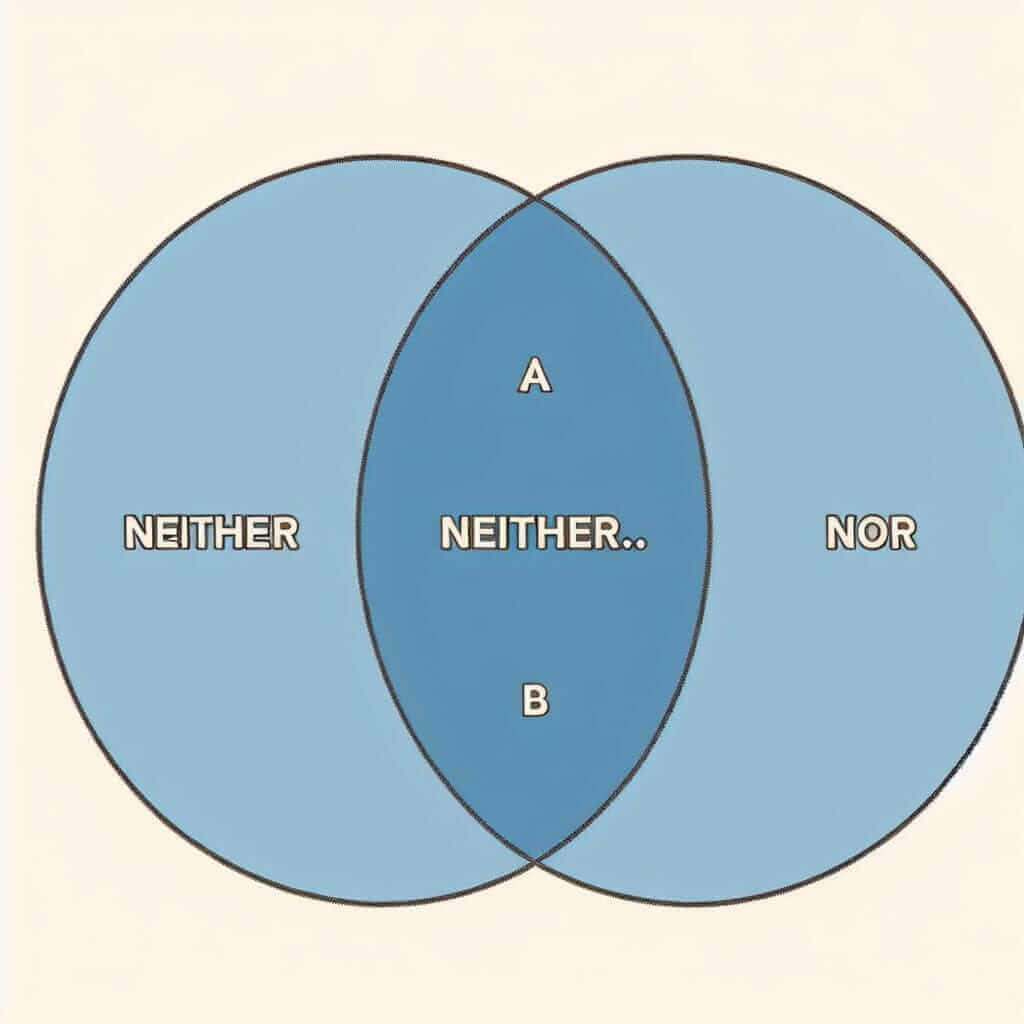The conjunction “neither… nor” often trips up IELTS test-takers, yet it’s a powerful tool for expressing negation and comparison. Understanding its nuances can significantly enhance your grammatical accuracy and lexical resource band scores. Let’s delve into the intricacies of “neither… nor” and see how it can be effectively employed in different sections of the IELTS exam.
Understanding “Neither… Nor” in IELTS
“Neither… nor” is a correlative conjunction used to connect two grammatically equal elements (nouns, verbs, adjectives, phrases, etc.) that are both being negated. Essentially, it means “not this one and not that one”.
Examples in IELTS contexts:
- Speaking Part 1: “Neither my parents nor my siblings have ever traveled abroad.” (Negating two noun phrases)
- Writing Task 2: “Some argue that technology isolates individuals, while others believe it fosters connection. In reality, technology neither isolates nor connects; its impact depends on individual usage.” (Negating two verbs)
- Listening Section 2: “The museum offers neither guided tours nor audio guides on weekends.” (Negating two noun phrases)
Constructing Sentences with “Neither… Nor”
Formula and Grammatical Points:
[Neither + Noun/Verb/Adjective/Phrase] + nor + [Noun/Verb/Adjective/Phrase]
Important Considerations:
- Subject-Verb Agreement: When “neither… nor” links two singular subjects, the verb should be singular.
- Correct: Neither the book nor the movie is very faithful to the original story.
- Incorrect: Neither the book nor the movie are very faithful to the original story.
- Parallelism: Ensure the grammatical structures following “neither” and “nor” are parallel for clarity and stylistic flow.
- Correct: The candidate neither articulated his policies clearly nor presented a compelling vision.
- Incorrect: The candidate neither articulated his policies clearly nor did he present any compelling vision.
Applying “Neither… Nor” in IELTS
1. Speaking:
- Part 1: Use “neither… nor” to provide more complex answers about your preferences, experiences, or opinions.
- Example: “Do you prefer reading fiction or non-fiction?”
- Response: “To be honest, I’m neither a big fan of fiction nor particularly drawn to non-fiction. I prefer reading articles and blogs.”
- Part 3: Employ “neither… nor” to express nuanced viewpoints or present balanced arguments during discussions.
- Example: “Do you think governments should invest more in public transportation or road infrastructure?”
- Response: “Ideally, governments should invest in neither one exclusively. A sustainable approach requires balancing investments in both public transport and road networks.”
2. Writing:
- Task 1 (Describing Graphs/Charts): Use “neither… nor” to highlight trends or make comparisons between data points.
- Example: “As illustrated in the graph, neither the sales of product A nor those of product B showed significant growth during the first quarter.”
- Task 2 (Essays): “Neither… nor” is effective for presenting balanced arguments, refuting extreme viewpoints, or introducing alternative perspectives.
- Example: “Some argue that globalization inevitably leads to cultural homogenization. However, globalization neither completely erases cultural differences nor guarantees cultural uniformity.”
3. Listening and Reading:
Be attentive to how “neither… nor” is used in these sections. It often signals key information or indicates that two options are being negated or contrasted.

Achieving Higher Band Scores
- Varied Constructions: Instead of always using the basic structure, experiment with different placements of “neither… nor” to add sentence variety.
- Example: “Neither in the bustling city center nor in the quiet suburbs did I find a suitable apartment.”
- Synonyms and Related Phrases: Show off your vocabulary range by incorporating synonyms like “nor… either,” “not… or,” or phrases like “neither one,” “neither of them.”
Common Errors to Avoid
- Incorrect Subject-Verb Agreement: Always double-check that your verb agrees with the subject closest to it when using “neither… nor.”
- Faulty Parallelism: Maintain grammatical consistency in the elements connected by “neither” and “nor.”
- Overuse: While useful, avoid overusing “neither… nor.” Employ it strategically to emphasize negation or contrast.
Conclusion
Mastering “neither… nor” equips you with a versatile grammatical tool that can enhance your IELTS performance. By understanding its structure, usage, and potential pitfalls, you’ll be well-prepared to express negation and comparison with clarity, sophistication, and confidence. To further strengthen your understanding of conjunctions, you can explore resources on correlative conjunctions. Remember, consistent practice is key to consolidating your grammatical skills and achieving your desired band score.